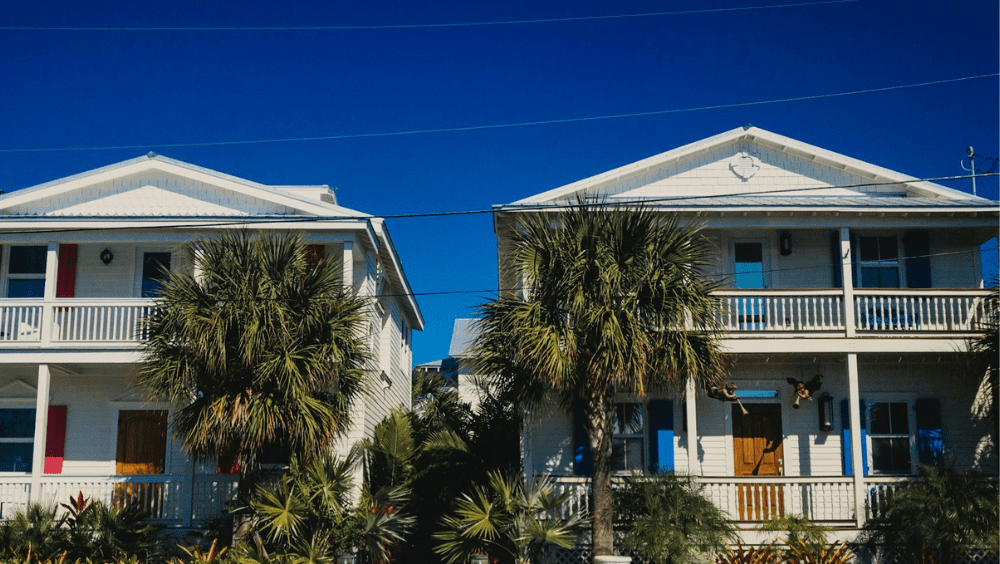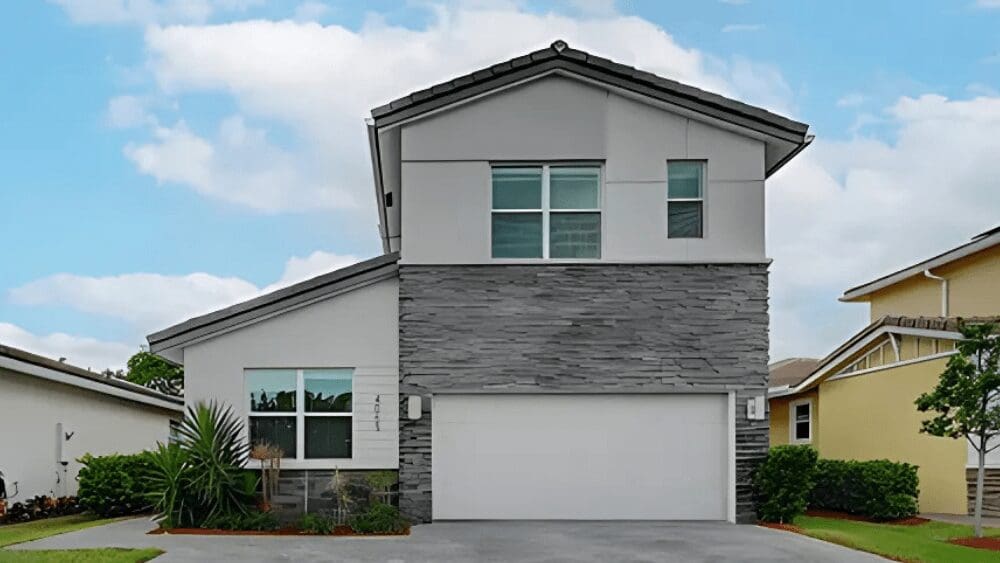
After several years of renting and moving in and out of different spaces, you’re (finally!) in a comfortable enough space financially to take the plunge and start looking for a more permanent place to call home. But if you make $70,000 per year (a little more than the 2018 median household income of $63,179, according to the U.S. Census Bureau), is it worth it to buy a home? And what can you actually afford right now? While online affordability calculators give you a great start, there are a ton of factors that go into what’s in your budget for your first home, including location, savings, debt, and credit score. It may seem like a lot, but it is possible to find a home you can actually afford while making just $70,000 a year. According to April Gongora Brown, a New Orleans-based agent who has sold 73% more properties than the average agent in her area, it’s completely doable to buy a home with that annual salary — as long as you find a good agent and a good lender. “I try my best to get my client to look at all of their options before committing to a lender and before we start hunting, even if they come to me preapproved, so that we’re not pigeonholed only looking at a certain type of property,” Brown says. Let’s break down these factors of what actually goes into paying for a home, so you can determine what’s in your budget. Instead of thinking of the price tag of a home as affordable, look at whether you can afford to borrow the money it will cost and can repay the loan in monthly payments. First, let’s figure out what your ideal mortgage payment will be — also known as what you’ll essentially be paying instead of rent. Aside from the actual mortgage, there are some key expenses that will impact your monthly payments. In addition to the cost of the home, you’ll have to pay property taxes that will vary widely depending where you plan on living. The average American household spends $2,375 on property taxes for their homes each year, or around $198 a month, according to the U.S. Census Bureau in a 2018 report. But the property tax in Alabama is 0.42%, while the tax in New Jersey skyrockets to 2.47%. So you’ll need to factor this location-based tax in to determine your affordability. Typically, your lender will require you to purchase homeowners insurance that covers your mortgage — just in case anything happens. The average annual homeowners insurance premium was $1,211, or $100.92 a month, in 2017, according to the National Association of Insurance Commissioners, but this cost will, again, vary where you live. Your lender might have specific requirements about how much and what kind of insurance you need to buy depending on the population density, risk of natural disasters, and other factors. “Most people are looking at how much their monthly [payment is] going to be, and sometimes we’ll find that the dollar amount that they’re quoted to qualify for and monthly [payment] works until we add in things like insurance.” Brown says. You can also talk to an insurance agent as you start looking and ask them to price policies for you if you find a house you adore and you want to make sure it will be cumulatively affordable. Homeowners associations (HOAs) represent 53% of owner-occupied dwellings, with more than 351,000 HOAs in existence, according to HOA-USA. If you purchase a home in one, you’ll need to pay monthly association fees that cover the maintenance of your community including landscaping and development of shared spaces. These fees can range from $100 to more than $1,000 each month, depending on the amenities in your association. Make sure you know whether you’ll need to pay HOA fees, so you can incorporate it in your monthly dues before you close on your new home. If you can’t afford a 20% down payment on your home and apply for a conventional loan, you’ll have to have private mortgage insurance (PMI) to cover the costs, or just plain mortgage insurance for a government loan (FHA loans or VA loans, for example). PMI will typically cost between 0.5% and 2.5% of your loan value annually; the less you put down, the higher your PMI will be. But in most instances, you won’t have to pay it every month until your mortgage is paid off. You can always refinance to get rid of it once you reach 20% equity. You can also cancel your PMI once your mortgage balance is 80% of the original purchase value of your home. However, PMI will affect how much you can afford to buy right now, which is something to consider if you can’t cover a 20% down payment on the home. According to Brown, you should spend between 28% to 36% of your take-home income on your housing payment. If you make $70,000 a year, your monthly take-home pay, including tax deductions, will be approximately $4,328. So, ideally, if we round that 28%-to-36% rule to one-third of your take-home income, you wouldn’t be spending more than $1,442 on your housing payment — don’t forget, that should include your principal and interest payment, taxes and insurance, any HOA fees, plus PMI or mortgage insurance if you have it. But if you have no debt, you can stretch up to 40% of your take-home income, which will be devoting about $1,731.20 to your mortgage payment. As mentioned earlier, if you make a down payment of less than 20% on a conventional loan, you’ll need to pay for PMI. But it’s important to make sure that your down payment and monthly expenses aren’t going to drain your bank accounts, and that you save some of that cash for emergencies. Not to mention, you’ll also need to put some of those savings toward the home inspection, appraisal, and closing costs. The minimum down payment for an FHA loan is 3.5%, 3% for certain conventional loans, so it isn’t necessary to devote most of your savings to your down payment and closing costs. In fact, if you get a VA or USDA loan and get the seller to pay the closing costs, you can buy a house with no money down at all. In addition to your mortgage payments, your lenders will take all your outstanding debt into consideration for your mortgage loans, including student loans, credit card debt, car loans, or other recurring debts. That’s why Brown warns buyers not to drive home a new car before house hunting — so your new car payments don’t cause any problems with your mortgage qualification. Remember: When it comes to your debt-to-income ratio, you shouldn’t be spending more than about 40% of your gross monthly income paying down debt, including your house payment. If you don’t have any current outstanding debts — congratulations! — you’ll have a larger range in terms of what you can afford. When it comes to real estate, it’s all about location, location, location — especially when it comes to what you can afford. Every market and even every neighborhood within a market is different, and you can probably find a variety of price ranges where you’re looking. It’s also good to keep in mind the property taxes you’ll be needing to pay depending on the state or city you’re looking in and whether there’s any additional home insurance you’ll need (such as flood insurance). While there isn’t a “national real estate market” (the market varies within each state and city), there are times when home prices tend to climb, plateau, and, sometimes, fall. Check up on the current housing market in your area to get a sense of how expensive homes will be. Your interest rate on your mortgage will depend on your credit score, so the lender can mitigate their risk — the higher it is, the lower the rate will be. Brown recommends pulling your credit report to get an idea of what it looks like before you start the buying process, so you can have a better idea of what your monthly costs will be. Depending on how much you want your monthly payment to be and how much you have to put down, you can choose between a 15-year or a 30-year loan, and many lenders will create a loan for you with custom terms. With the shorter loan, you will get the very best interest rate, Brown says. “You can always save even more on what you’re borrowing by paying a little bit more every month on the principal or the interest, rather than just taking all this money out of your savings to put down on the home,” Brown says. Using HomeLight’s simple Home Affordability Calculator, you can plug your information to get a sense of what you can afford. Here are some hypothetical examples (generated in April 2020) for buyers who make $70,000 a year with different sizes of savings, debt, and different credit scores. Location: Nashville, Tennessee Gross annual income: $70,000 Money saved: $80,000 Amount of money for a down payment and closing: $70,000 Monthly debt: $250 Credit score: Average (630-689) After plugging in these numbers, HomeLight estimates that you can afford a home that costs $275,218, with monthly payments of $1,850. Let’s break down how everything factors in: Debt-to-income-ratio: 36% Safety-net (months): 5.4 Mortgage payment: $1,151 Property taxes: $345 Homeowners association fee: $250 Homeowners insurance: $104 Down payment: $58,841 Estimated closing costs: $11,159 Annual interest rate: 4.92% Mortgage term: 30 years Location: Brookline, Massachusetts Gross annual income: $70,000 Money saved: $15,000 Amount of money for a down payment and closing: $10,000 Monthly debt: $750 Credit score: Excellent (720-850) After plugging in these numbers, HomeLight estimates that you can afford a home that costs $173,702, with monthly payments of $1,350. Let’s break down how everything factors in: Debt-to-income-ratio: 36% Safety-net (months): 3.7 Mortgage payment: $791 Property taxes: $237 Homeowners association fee: $250 Homeowners insurance: $71 Down payment: $2,902 Estimated closing costs: $7,098 Annual interest rate: 3.75% Mortgage term: 30 years Location: Kansas City, Missouri Gross annual income: $70,000 Money saved: $25,000 Amount of money for down costs: $20,000 Monthly debt: $0 Credit score: Good (690-719) After plugging in these numbers, HomeLight estimates that you can afford a home that costs $282.997, with monthly payments of $2,100. Let’s break down how everything factors in: Debt-to-income-ratio: 36% Safety-net (months): 2.4 Mortgage payment: $1,331 Property taxes: $399 Homeowners association fee: $250 Homeowners insurance: $120 Down payment: $8,530 Estimated closing costs: $11,470 Annual interest rate: 4.13% Mortgage term: 30 yearsSo what actually goes into your mortgage?
Taxes and insurance
HOA dues
Private mortgage insurance
How much should you be spending on a mortgage?
Other factors to consider
Your savings
Your debt
Where you want to buy
The real estate market
Mortgage interest rates
Mortgage terms
How to calculate what you can afford
The big saver with OK credit
Great credit with limited savings
No debt with middle-of-the-road credit



